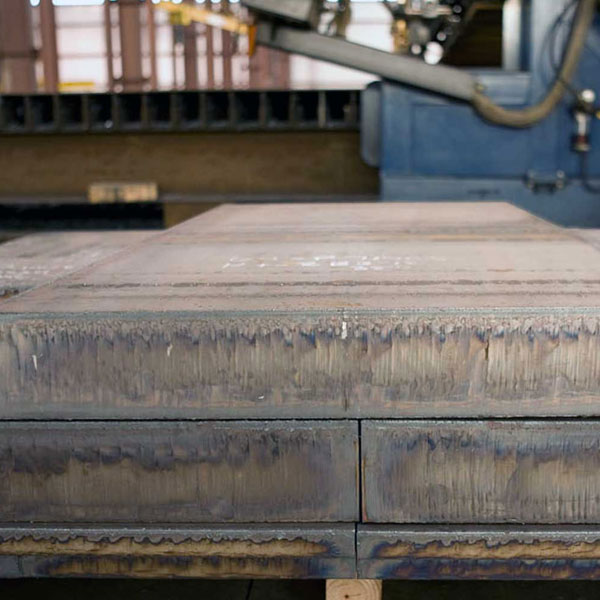When you’re dealing with extreme abrasion, one question always comes up:
Should I go with AR500 steel plates or Chromium Carbide Overlay (CCO)?
Both are known for high wear resistance — but they’re built differently, perform differently, and are suited for different types of environments.
Let’s break it all down so you choose the right solution for your industry.
Basic Definitions: What Is CCO vs What Is AR500?
🔹 AR500 Plate (Abrasion-Resistant Steel, 500 BHN)
- Made from quenched & tempered alloy steel
- Uniform hardness ~500 BHN throughout the plate
- Tough, weldable, can take impact
🔸 Chromium Carbide Overlay Plate
- Made by welding a layer of chromium carbide (CrC) on a mild steel base
- Composite plate with a hard top layer and soft backing
- Designed to resist abrasion only, not impact
In short: AR500 is a monolithic wear plate. CCO is a bi-metallic overlay plate.
Property Comparison Table
| Feature | AR500 Steel Plate | Chromium Carbide Overlay (CCO) |
|---|---|---|
| Hardness | ~480–550 BHN | Surface ~600–700 BHN |
| Thickness Range | 6mm to 100mm | Typically 6–10mm overlay on base |
| Impact Resistance | Good | Poor – Cracks under impact |
| Abrasion Resistance | High (Uniform) | Extreme (Top surface only) |
| Welding & Fabrication | Easy to weld and cut | Difficult – needs special processes |
| Bending / Forming | Can be formed | Not recommended |
| Heat Resistance | Moderate (~200–300°C) | Better (~400°C+) |
| Lifespan | High in impact-prone zones | High in sliding abrasion zones |
| Cost | Moderate | Expensive per m² |
Which One Is Better for Your Application?
Here’s the honest breakdown — it depends on how the plate will be used:
Use AR500 If…
- Your equipment faces impact + abrasion
- You’re working in mining, excavation, or crushing
- You need machinability, bending, or welding
- You’re fabricating custom buckets, wear liners, tipper trucks
AR500 is your go-to for field toughness and multi-wear resistance.
Use Chromium Carbide Overlay (CCO) If…
- The wear is purely sliding abrasion, no impact
- You’re dealing with fine particles, slurries, cement, or sand
- You want to increase wear life with a replaceable liner
- Your system tolerates hard and brittle surfaces
CCO is unbeatable when it comes to dry sliding abrasion.
Industry-wise Recommendation
| Industry | Suggested Plate |
|---|---|
| Mining (Shovels, Hoppers) | AR500 or Quard 500 |
| Cement (Chutes, Silos) | CCO Plates |
| Quarry (Truck Liners) | AR500 or NM500 |
| Agriculture (Blades, Plows) | AR400 / Mn13 |
| Sugar (Crushers) | CCO with base plate |
| Defense (Ballistic) | AR500 or MIL Plates |
Voice Search Answers
Q: What is the difference between CCO and AR500?
AR500 is a single steel plate hardened throughout. CCO has a hard chromium carbide layer over a soft steel base, meant only for abrasion.
Q: Can you weld AR500?
Yes. With proper pre-heat and low-hydrogen electrodes, AR500 can be welded.
Q: Is CCO better than AR500?
Not always. CCO is better for pure abrasion, while AR500 is better when impact is involved.
Q: What’s the price difference between CCO and AR500?
CCO is typically 20–30% more expensive due to complex processing.
Expert Tip Before You Buy
Never choose just by BHN value alone.
Look at how the plate behaves under your actual operating load — impact, temperature, vibration, and wear media.
Related Links You May Like
- What Is AR500 and How Is It Used?
- Best Wear Plates for Mining in Africa
- Custom Profile-Cut AR500 Supplier in India
Need Help Choosing?
At Hindustan Steel Corporation, we supply both:
- Monolithic AR Grades (HIND HARD 450 / 500 / 600)
- CCO Plates (CrC Overlay in various thicknesses)
We guide OEMs, fabricators, and EPC buyers across India, UAE, and Africa.

